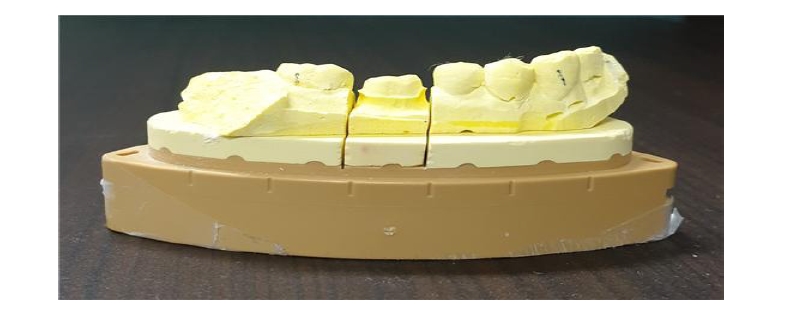Abstract
Objectives: The purpose of this study is to assess the accuracy of provisional restorative resins fabricated using dental three-dimensional (3D) printers. Methods: Provisional restorative resins were fabricated using the first molar of the right mandibular. Three groups comprising a total of 24 samples of such resins were fabricated. The prepared abutment was scanned initially and then designed using a computer-aided design (CAD) software. The conventional subtractive manufacturing system was employed to fabricate the first group of resins, while the second and third groups were fabricated using a digital light processing (DLP) 3D printer and a stereolithography (SLA) 3D printer, respectively. The internal surfaces of the resins were scanned and 3D measurements of the resins were taken to confirm their accuracy. Results: The root-mean-square deviation (RMS±SD) of the accuracy of the resins fabricated using the conventional subtractive manufacturing system, DLP 3D printer, and SLA 3D printer were 68.83±2.22 ㎛, 74.63±6.23 ㎛, and 61.74±4.09 ㎛, respectively. A one-way analysis of variance (ANOVA) test showed significant differences between the three groups (p < 0.05). Conclusions: Provisional restorative resins fabricated using DLP and SLA 3D printers demonstrated clinically-acceptable results.
Figures & Tables

Fig. 1. Working model. Solid cast for single crown.


